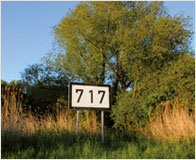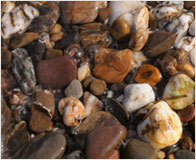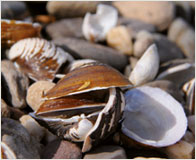- ι
- ι
- ι
- ι
- ι
- ι
- Visitor Information
- ι
Rhein - A Major WaterwaySlide show
Water transports goods
The ferry that crosses to Zons is careful to respect the right of way of the big barges plying the river – they have a braking distance of up to one kilometre. The River Rhine is a major waterway on which numerous boats transport goods. Around 190 million metric tonnes of freight were transported on the Rhine and its tributaries in 2012 alone. At 80 percent, barge traffic was heaviest on the stretch between Dinslaken and Bonn.
Transported goods are mainly crude ores, stones, coal, natural gas, and coking and mineral-oil products. If you've spotted a boat and would like to know what it is carrying, where it comes from, and where it is going, click here: (www.marinetraffic.com)
The ferry that crosses to Zons is careful to respect the right of way of the big barges plying the river – they have a braking distance of up to one kilometre. The River Rhine is a major waterway on which numerous boats transport goods. Around 190 million metric tonnes of freight were transported on the Rhine and its tributaries in 2012 alone. At 80 percent, barge traffic was heaviest on the stretch between Dinslaken and Bonn.
Transported goods are mainly crude ores, stones, coal, natural gas, and coking and mineral-oil products. If you've spotted a boat and would like to know what it is carrying, where it comes from, and where it is going, click here: (www.marinetraffic.com)



Water moves mountains
As the water flows towards the sea, it carries rocks, gravel, and sand downstream. In the Düsseldorf area the annual volume of coarse sediment moved by the river is around 450,000 metric tonnes. On its long journey from the Alps, the River Rhine collects rocks from the Black Forest, Mainfranken, Hunsrück, Taunus, Eifel and other regions, including the areas through which its tributaries pass. As they are carried downstream, the rocks are eroded by the water, getting smaller and rounder until they end up as colourful pebbles on the river's edge. Go to A New Riverbed The Rhine's current level in Düsseldorf
Water gives life
Animals and plants from other regions can also be found here, having either been carried by ship or swept along by the river. Some of them covered vast distances before coming ashore in the nature reserve. The now common Asian clams originally arrived with ships via the Netherlands. Seeds washed onto the gravel banks develop into plants that look quite exotic in these surroundings, such as tomatoes or amaranth.
As the water flows towards the sea, it carries rocks, gravel, and sand downstream. In the Düsseldorf area the annual volume of coarse sediment moved by the river is around 450,000 metric tonnes. On its long journey from the Alps, the River Rhine collects rocks from the Black Forest, Mainfranken, Hunsrück, Taunus, Eifel and other regions, including the areas through which its tributaries pass. As they are carried downstream, the rocks are eroded by the water, getting smaller and rounder until they end up as colourful pebbles on the river's edge. Go to A New Riverbed The Rhine's current level in Düsseldorf
Water gives life
Animals and plants from other regions can also be found here, having either been carried by ship or swept along by the river. Some of them covered vast distances before coming ashore in the nature reserve. The now common Asian clams originally arrived with ships via the Netherlands. Seeds washed onto the gravel banks develop into plants that look quite exotic in these surroundings, such as tomatoes or amaranth.
Search:






